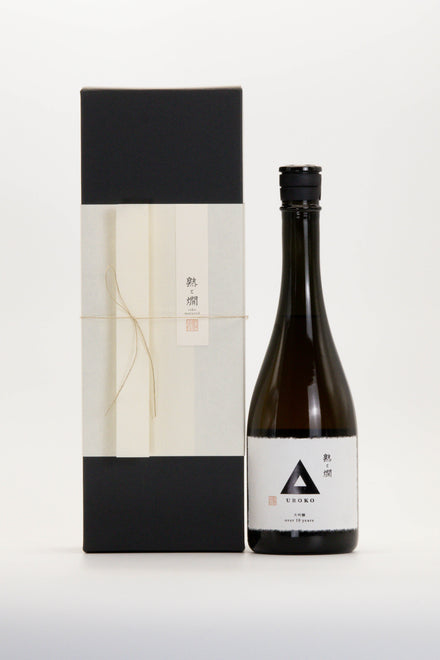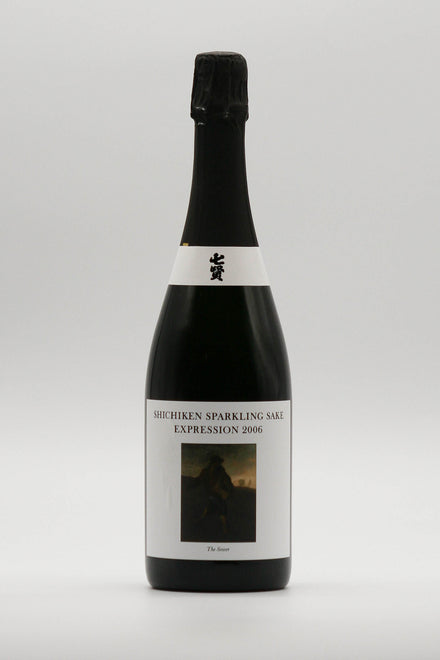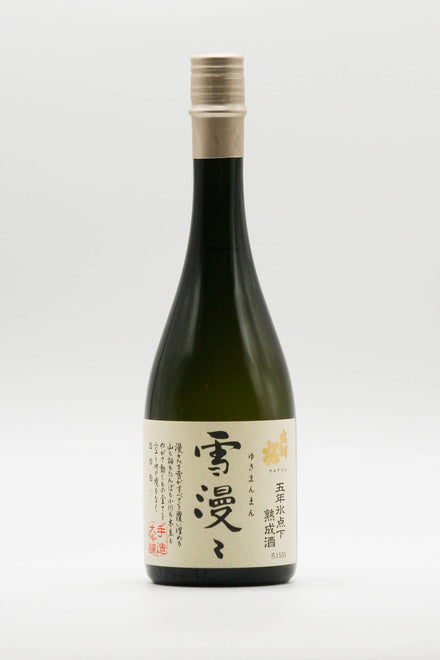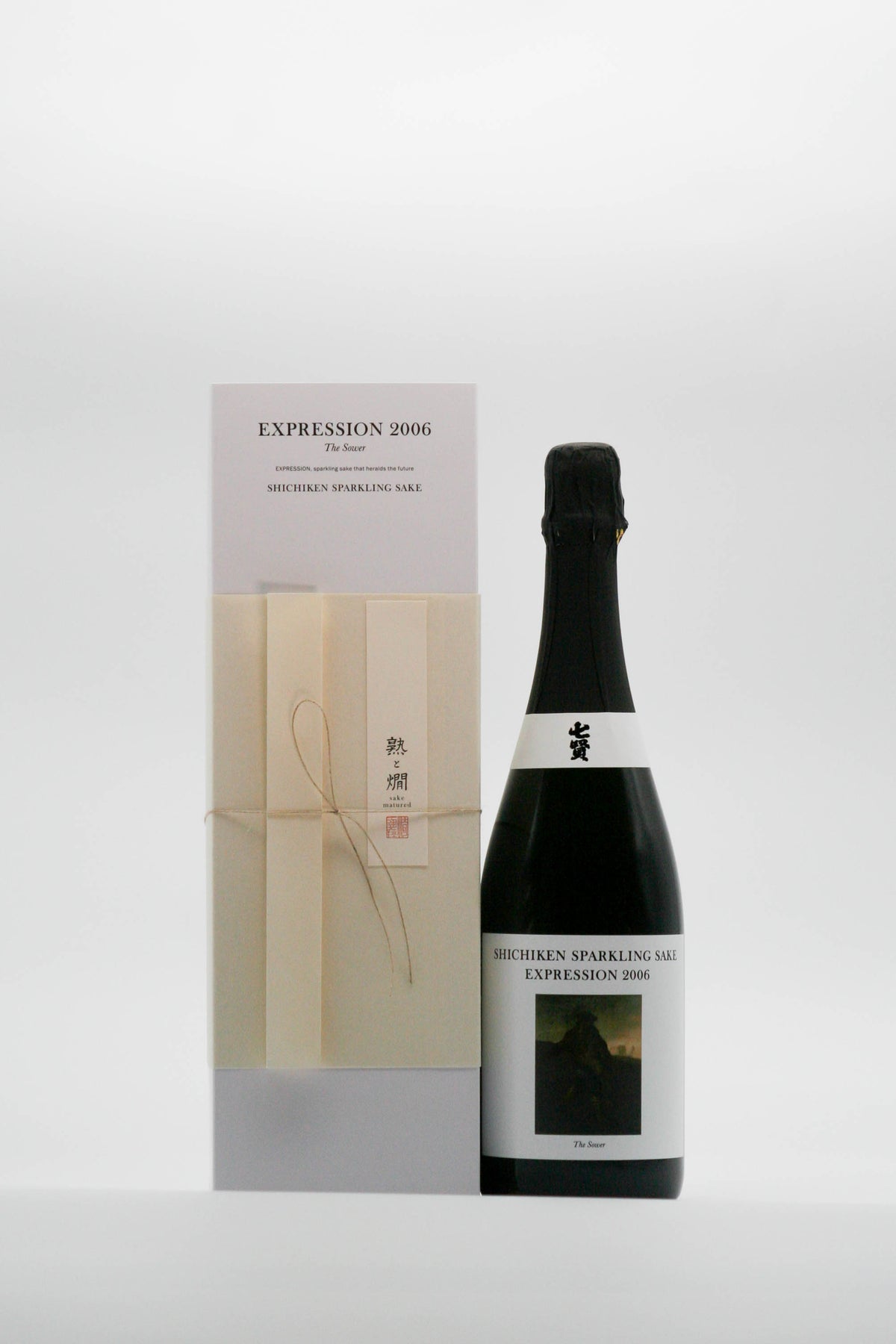
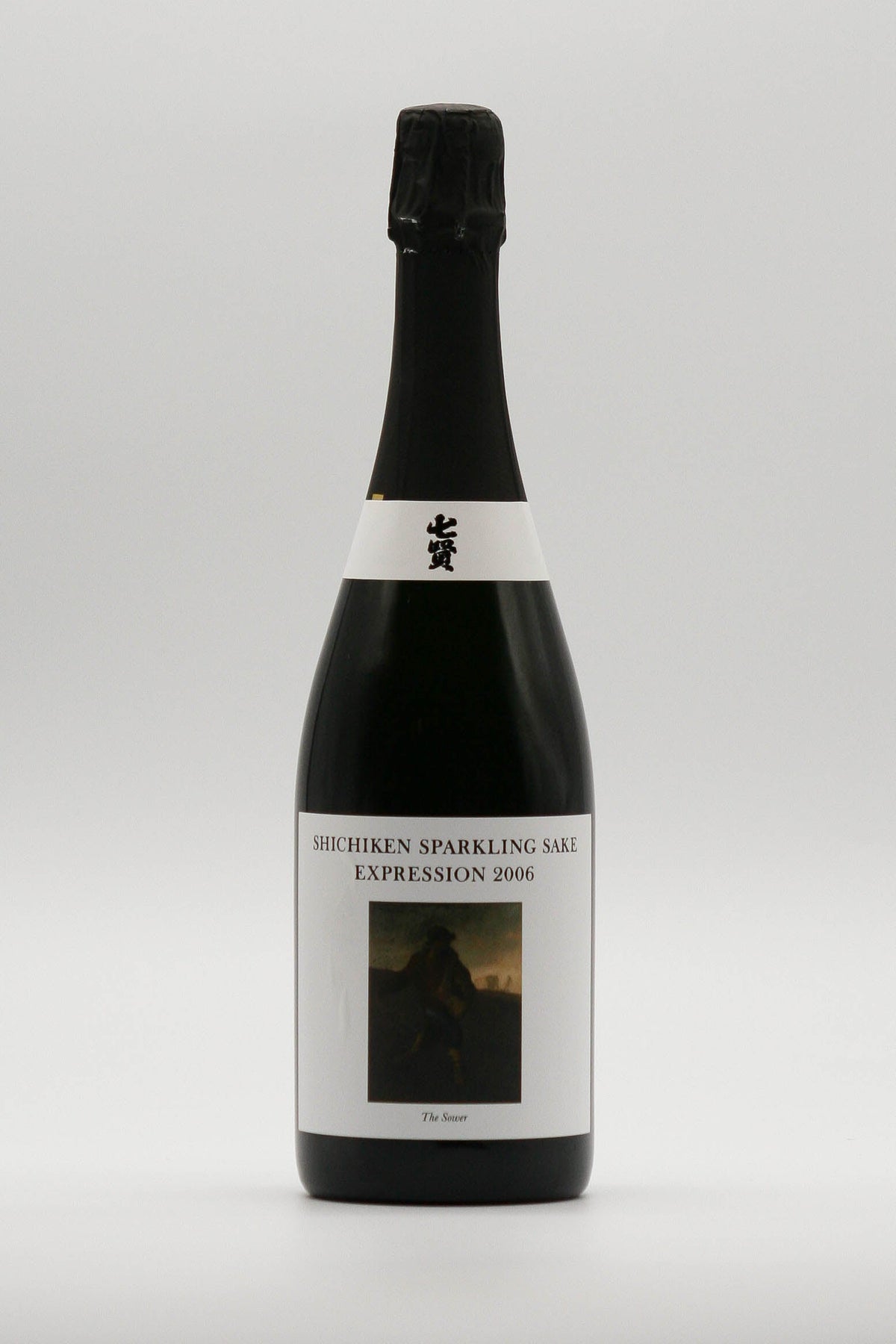
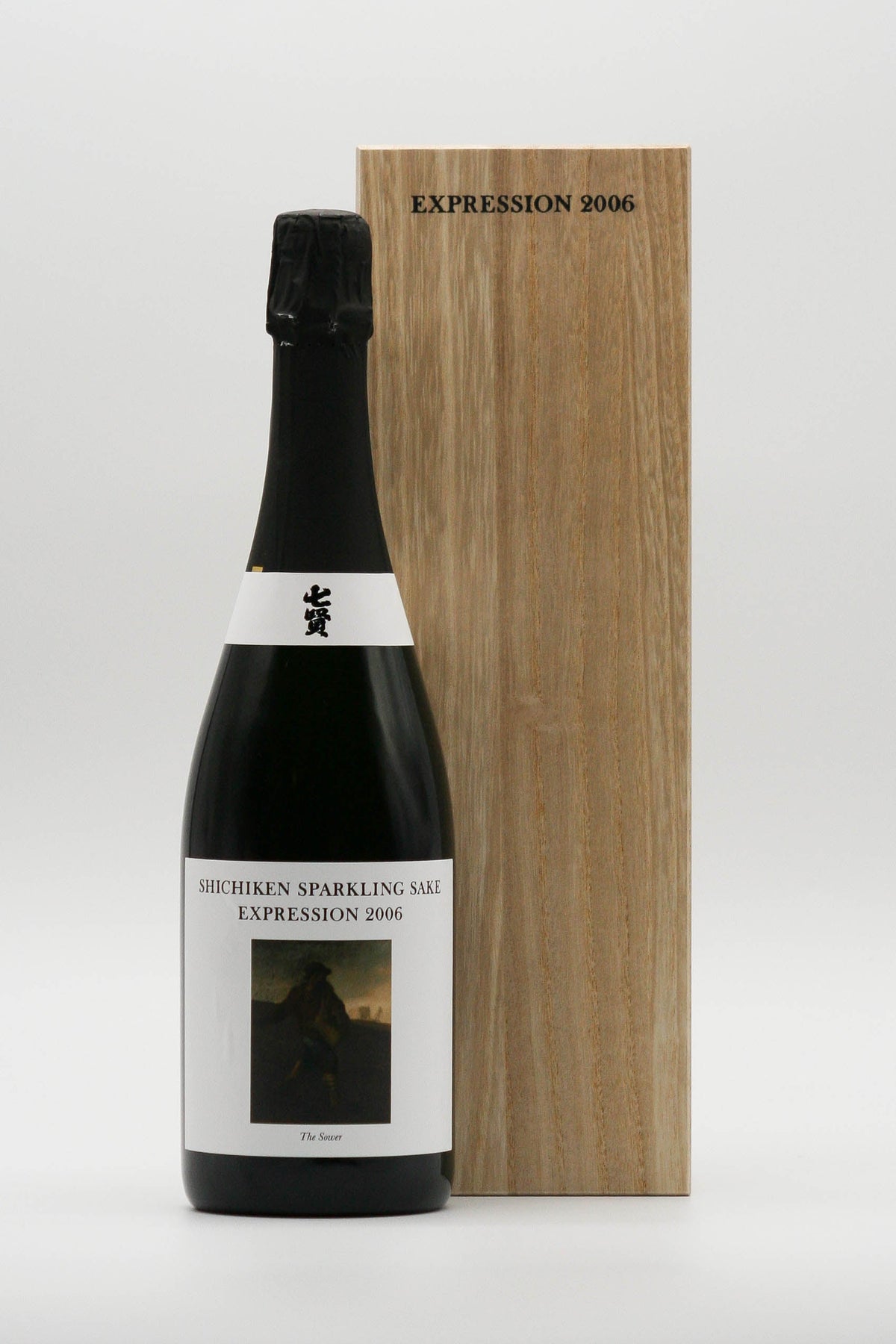
An Awasake (Japanese sparkling sake made by a member of the Awasake Association) with gentle bubbles, refreshing citrus aroma and a pleasant astringency. The gas is created via a second fermentation in the bottle (similar to the way Champagne is made) to create an incredibly nuanced sake.
[Gift]Shichiken Sparkling Expression 2006
| Vintage | 2006 |
| Years aged | 17 years |
- 10 years or more
- 10,000 – 49,999yen
- 2000-2009
- All Products
- As aperitif and/or with starters
- Gift suggestions
- Light Yellow/Green
- Brewer:
- Alcohol:12 degrees
- Volume:720ml
Couldn't load pickup availability
[ Drinking alcohol under the age of 20 is prohibited by law. ]
The sake is made by replacing some of the brewing water with a Daiginjo sake brewed in 2006, using two types of yeast to express a variety of flavors. From the moment you pour it, the refreshing and sweet aroma of ramune (a Japanese fizzy drink) and citrus wafts up from the glass. The first impression in the mouth is a light acidity, followed by a pleasant astringency that supports the overall balance. This is a high-quality Japanese sparkling sake called Awasake with a pleasant yogurt-like flavor from the lactic acid and a slight sweetness.
The label and gift box art is Jean - François Millet's "The Sower." The recipe is said to be inspired by Millet's artistic activities and life.
*Before opening the bottle, let it cool and open it slowly and carefully to release the built-up gas pressure.
As the temperature rises to room temperature, the flavor opens up.
- about
-
Type スパークリング Rice polishing ratio - Yeast type - Ingredients/raw materials Rice (domestic), Koji rice (domestic), sake (domestic) Rice type - Origin of rice - Toji(Brew Master) - Assemblage -
- Recommended occasions/temperature
-
- How to store
-
- Delivery dates and charges
-
![[Gift]Shichiken Sparkling Expression 2006](http://sakematured.com/cdn/shop/files/IMG_1037.jpg?v=1701995129&width=1445)
![[Gift]Shichiken Sparkling Expression 2006](http://sakematured.com/cdn/shop/files/IMG_0582_08472676-9876-4f33-be20-c45a2f0ca9ac.jpg?v=1701995129&width=1445)
![[Gift]Shichiken Sparkling Expression 2006](http://sakematured.com/cdn/shop/files/IMG_0584_452553b7-1379-4409-b78c-d6b0030b6ceb.jpg?v=1701995129&width=1445)
Tasting comments
-
Nobuhiro Ueno
(Juku to Kan Bar Master / Permanent Director of the Toki Sake Association)From the moment you open the bottle, the aroma of ramune and citrus is evident. The effervesence is so unbelievably vigorous for a sake that has been aged for 17 years.
Many sparkling sakes have a sweet and dull feel, but this sparkling sake is less sweet and has an acidic tone that can be enjoyed throughout the meal. The finish is a perfect palate cleanser.
The scent is youthful, with ramune and citrus notes, so I feel it could be further aged to increase its appeal. You can also try aging it at different temperature ranges. As it ages, you will enjoy a more complex flavor and even better effervescence. -
Hidekazu Ishiwata
(Former National Tax Bureau Chief Appraiser)Amid a lively effervescence, ripe fruity aromas weave in and out of the fizzy notes, accentuated by a light, volatile acidity. In the mouth, it has a graininess and a bread-like toasty feel. There is a yeast-derived complexity. Highly recommended for those who like the aroma of sur-lie wine.
-
Akiko Toda
(Director of ITTEKI, Japan Sake and Meat Research Institute)It's a faint yellow, with considerable gas pressure overflowing from it. The acidity nicely balances the wine, so from the first impression in the mouth, it appears tighter and more muscular than younger vintages. It’s like a beautiful spring day in the clear air. As the gas melts away, it awakens, revealing layers and a rich texture.
Each sip presents an expression like thin layers of colored paper, and its metamorphosis in the glass is a joy to behold. It is still a little chilly for this sake. It would be the perfect accompaniment for spring when the flowers bloom. -
Yuji Yamauchi
(Yushima Tenjinshita Sushi Hatsu 4th generation / 1st JSA SAKE DIPLOMA competition winner)It is slightly candy-colored and has a sweet aroma of cotton candy and slightly toasted bread. The lively effervescence, juicy sweetness, and acidity are well-balanced and keep you returning. It is a sparkling beverage that should not be judged just on its bubbles. The sweetness is clearly defined and the finish long. It is young and juicy for its age, so it might develop more depth if it were left to age a little longer. It perhaps needs to be a bit drier to retain its appeal through a full course of food.
Brewer
- Choosing a selection results in a full page refresh.
- Opens in a new window.

